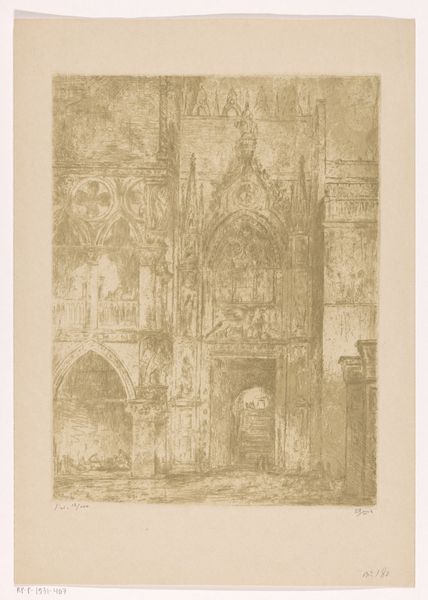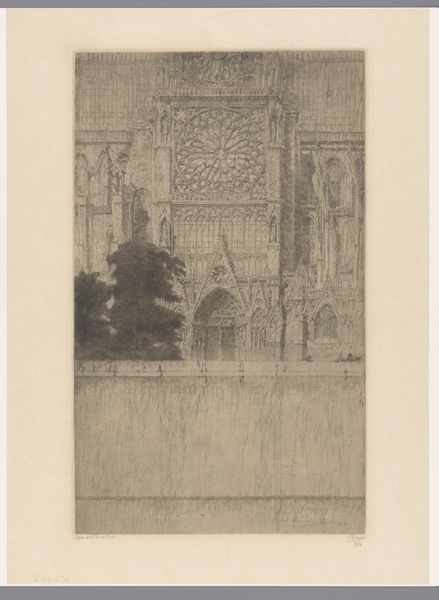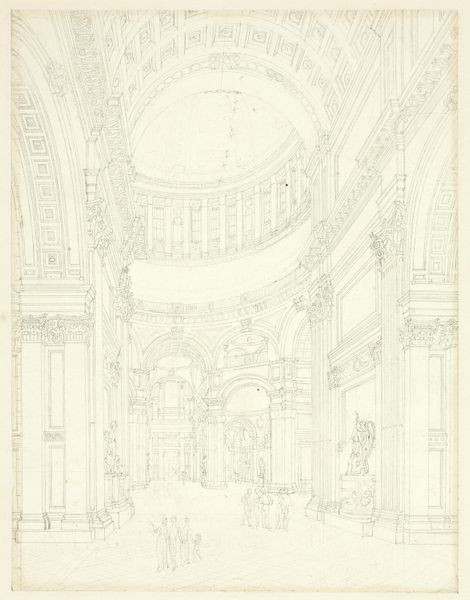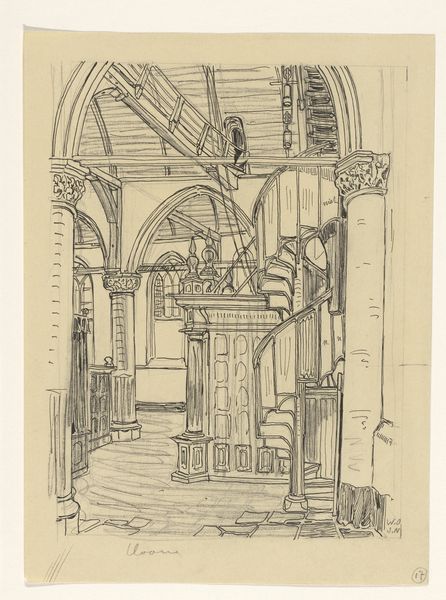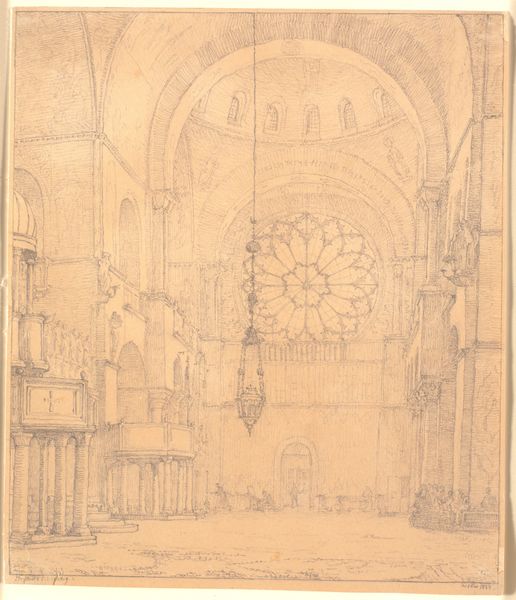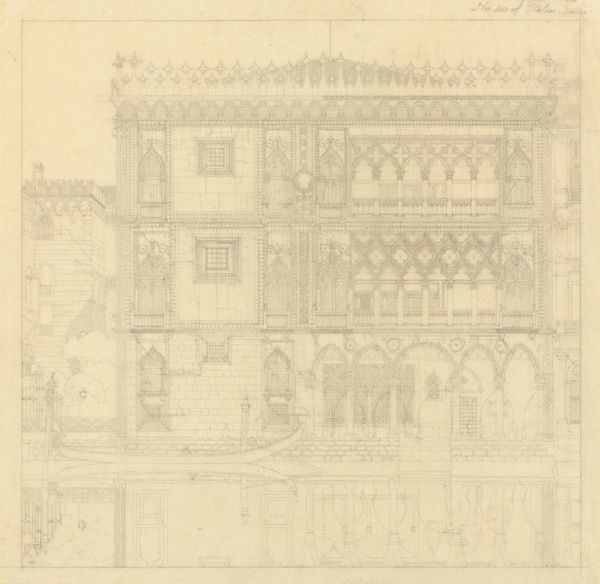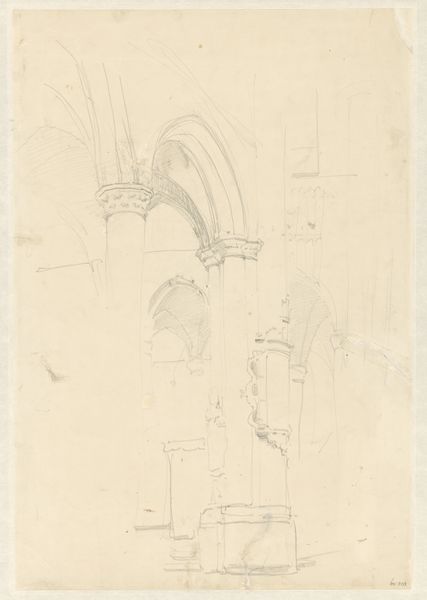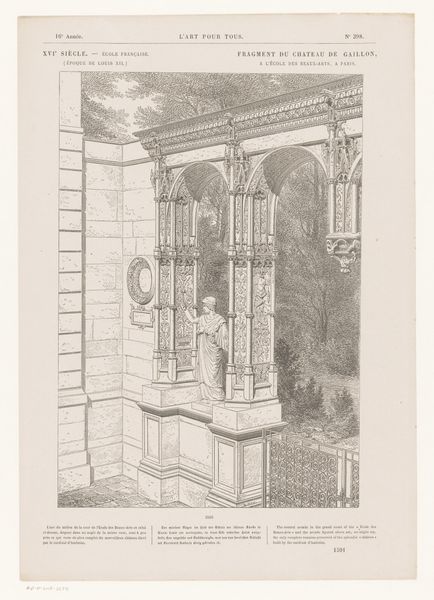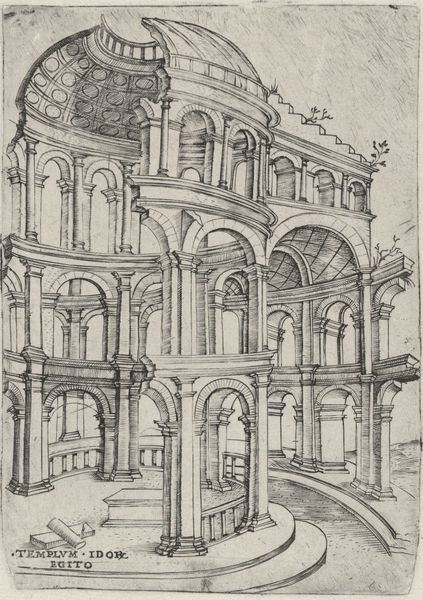
drawing, etching, architecture
#
drawing
#
etching
#
etching
#
architectural drawing
#
line
#
cityscape
#
architecture
Dimensions: image: 20.4 x 12.7 cm (8 1/16 x 5 in.) sheet: 39.4 x 26.5 cm (15 1/2 x 10 7/16 in.)
Copyright: National Gallery of Art: CC0 1.0
Editor: So, here we have "The Balcony," an etching by John Taylor Arms, created in 1930. I'm struck by how incredibly detailed it is, almost photographic in its precision. There’s a real sense of aged grandeur, even decay, in the architecture. What are your thoughts on this piece? Curator: It's interesting to consider Arms's choice of subject matter during this period. The 1930s saw widespread social and economic upheaval, yet here is a meticulously rendered image of European architectural refinement. Don't you find it curious that an American artist chose to focus on the timeless beauty of Venetian architecture instead of depicting the realities of the Great Depression, for example? Editor: I hadn't thought about it that way. Was there a market for these kinds of nostalgic images in America at the time? A desire to escape, maybe? Curator: Exactly! The art market, especially for prints, catered to a middle class that aspired to European culture. Arms's technical skill also elevated the status of printmaking as a legitimate art form, competing with painting. We can see how this work contributed to the appreciation of architectural beauty. Is it more than mere escapism? Could it also function as a kind of cultural preservation? Editor: That's a great point! It's almost like he's documenting a place that might not last forever. So, he’s really using his art as a medium to solidify architectural cultural heritage and its preservation. Curator: Precisely. I also notice the distinct lack of people. That lends the drawing this almost surreal quality, a static monumentality removed from everyday life. Does it give you any thoughts? Editor: That definitely amplifies the timeless feel of the piece, emphasizing the architecture as a subject in and of itself, rather than just a backdrop for human activity. I see so many new facets of the piece through your analysis. Curator: And I appreciate you bringing this work to our attention. It reminds us that art often operates within a complex web of social, economic, and political contexts.
Comments
No comments
Be the first to comment and join the conversation on the ultimate creative platform.
